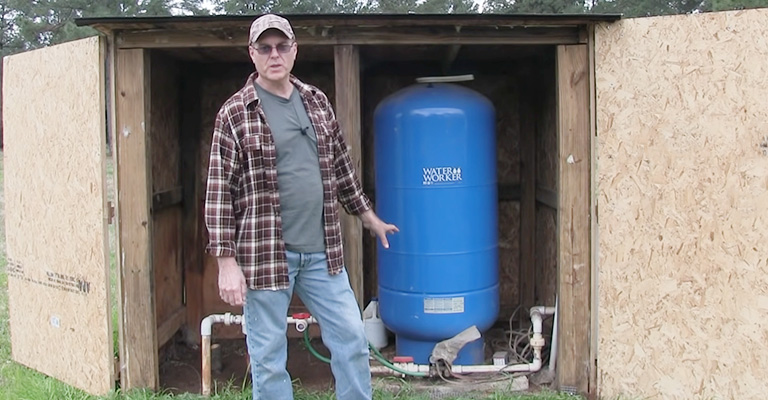If you rely on a well to supply water to your home, a pressure tank is an essential component of your water system.
The pressure tank plays a critical role in maintaining consistent water pressure and ensuring that your water supply is always readily available.
However, there are times when your pressure tank may not fill up with water, leading to a lack of water pressure and a disrupted supply. How do I know if my pressure tank has failed?
There are several potential reasons why your pressure tank may not be filling up with water, including issues with the excellent pump, pressure switch, or tank itself.
Iron and manganese sediments can cause the bladder’s surface to harden, making it less flexible. Sediments can also block the fill or draw line, preventing the tank from filling and emptying properly.
Understanding the potential causes of this problem can help you diagnose and resolve the issue quickly, restoring your water supply to its full functionality.
You might have accumulated silt in your pressure tank’s bladder or diaphragm, which is the apparent cause of this problem. In this way, your pressure tank’s diaphragm might no longer be able to stretch and shrink appropriately as a result.
It is important to note that this phenomenon does not only occur for this reason. In addition to these factors, plenty of others can result in this problem. You can read my guide here to solve this problem quickly and let your pressure tank fill up easily.
Is Your Pressure Tank Really Not Filling Up With Water?
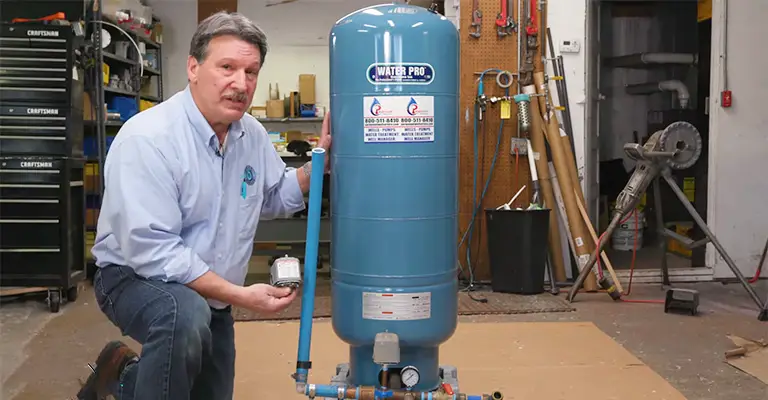
It is unlikely that the pressure tank will ever fill up with water. As a result, about 70% of the entire tank volume might be filled up. If you want to fill up your tank with more water, it is not possible.
If your pressure tank is not filling up with water, touch the tank to see if it fills up. You must touch the tank’s top and bottom surfaces to ensure there is water in it.
A problem exists if you touch the pressure tank from its outer side and detect no water at either end.
Meanwhile, the lower part of your water tank might appear to have water, while the top has none. It shows that you are doing everything right if this is the case.
Reasons Why Pressure Tanks Might Not Fill Up With Water
There are several reasons why the pressure tank in your house might not fill with water, as mentioned above. Examples include:
1. The Pressure Tank Might Be Waterlogged:
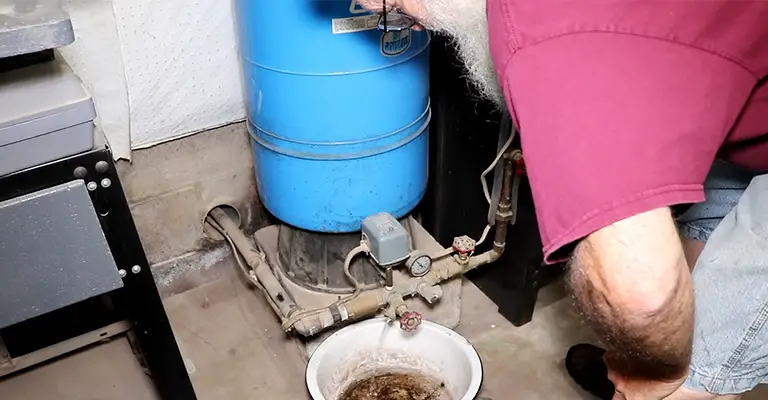
Tank owners often find their pressure tanks flooded when they encounter this unusual problem. Waterlogging is what it sounds like, right?
If you have an overfilled pressure tank, but the water cannot flow to the faucets because of some malfunction, this is the situation.
This resultantly leaves the water inside the tank stagnant, and despite having water in the tank, no water can reach your faucets.
Moreover, if your pressure tank becomes waterlogged, the pressure environment in the tank will also be affected. The reason is that waterlogging causes a tank’s air-to-water ratio to become unbalanced.
It follows that the pump cycle is also disrupted, resulting in the pump being unable to fill the tank with new water. As a result, you will not be able to obtain water from your faucets in that scenario.
You might think that the tank has no water because there isn’t any visible water. Although the tank has some water, it’s stagnant.
As a result, such problems worsen if they are not dealt with immediately because stagnant water provides fertile ground for the growth of chemicals, bacteria, and algae.
Furthermore, when static water remains in your pressure tank, your pump must run more frequently to supply water to your faucets. This also causes your pump’s lifespan to diminish rapidly.
2. Pressure Inside The Tank Has Altered:
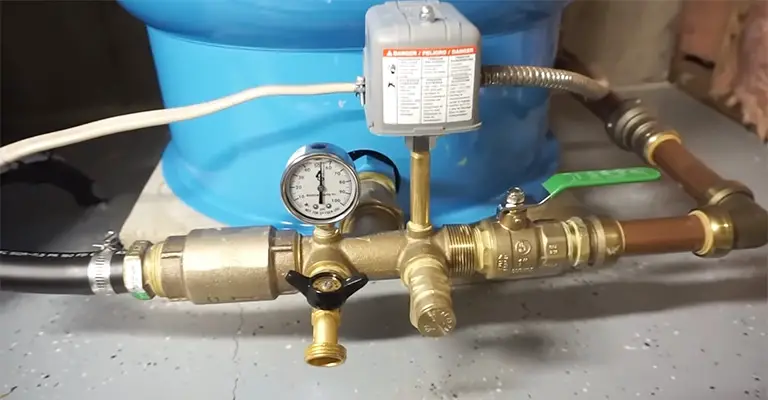
In addition to the pressure settings, you should also ensure the actual pressure within the pressure tank is set to recommended levels.
If, for example, your pressure tank has a cutting-in pressure of 30 psi, but the pressure inside the tank does not even reach 32, the pump will not fill it up. You cannot use the cut-in pressure trigger for your tank because it does not work.
3. Pressure Setting Is Incorrect:
Each pressure tank has a cut-in pressure setting that triggers the pump to start pumping water into the tank.
For example, you might imagine your pressure tank’s cut-in pressure is 30 PSI. Water will be pumped into the tank when the pressure exceeds 30 pounds per square inch.
As an alternative, the cut-off pressure setting is entirely opposite to the cut-in pressure setting.
When your pressure tank reaches more than 60 PSI, the pump will stop pumping water into it. An example will be if the tank has a 60 PSI cut-off pressure.
It becomes a problem when pressure settings are accidentally altered. Basically, if the cut-in and cut-off settings are not set correctly, the pressure tank may stop filling.
4. Air Leak In The System:
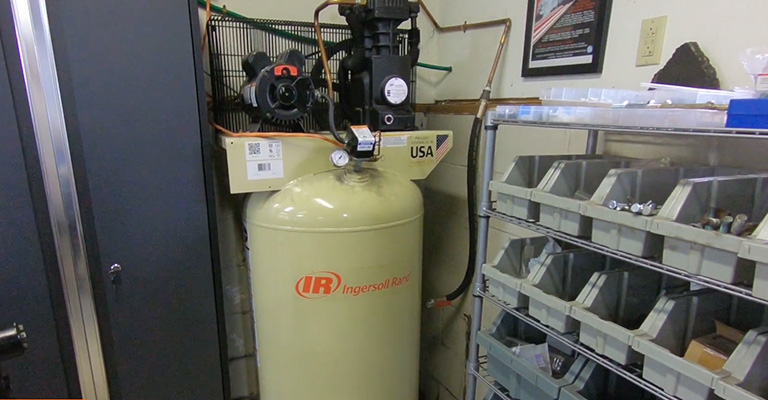
Developing an air leak within your water system would result in pressure loss if your system’s hardware becomes rusted and corroded with age.
Consequently, your pressure tank’s general function might be compromised permanently. As a result, the container will not fill up with water.
5. Defective Bladder:
Your bladder won’t fill appropriately at all if it’s filled with silt, causing problems when refilling. When water overflows into the bladder, the bladder can rupture.
An overfilled tank can occur due to a pump malfunction (which feeds water to the tank). It is highly likely that water will not be refilled into the pressure tank if this phenomenon occurs.
Why Does My Well Pressure Tank Feel Empty?
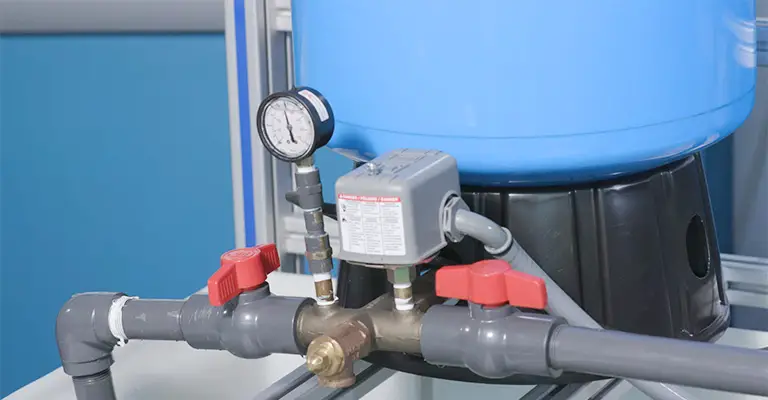
In case you notice a malfunction with your well-pump pressure tank, now is the time to investigate. Various factors can cause a well pump to stop working properly, but the most common culprit is a depleted well pressure tank.
Wells are fantastic resources that can offer excellent water for many years with little maintenance. Most wells are designed to run for years without needing to be serviced.
Nevertheless, many homeowners don’t realize that their water well needs maintenance or to be serviced until it’s too late. “I am experiencing problems with my pressure tank.”.
In what ways can I fix this? The question “Did you have trouble with your well water?” is one we hear frequently. What is causing the water in my well to sputter? I’m having trouble troubleshooting the pressure tank in my well.”
When there are issues with your well pump pressure tank, it’s time to investigate. Several causes can cause well pumps to stop working properly, but the most common is a drained pressure tank.
Understanding Different Types Of Well Tanks
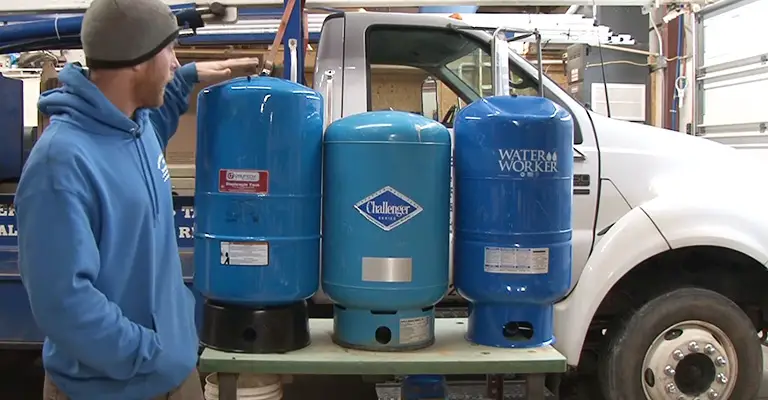
When shopping for a well tank, it is essential to understand the differences between the different types on the market. Diaphragm tanks and bladder tanks are two of the most popular pressure tanks for well pumps.
It is the inner rubber bladder of bladder tanks that collapses as the water level drops below the cut-in point. A closed inlet valve prevents any more water from entering the tank, meaning only what’s left in the pipe will get to your home.
Fortunately, there are several signs to watch for that will warn you when there are problems with your water well or well pressure tank. The process of troubleshooting well water difficulties can be completed in a few easy steps.
The Well Has A Problem
In most cases, this is diagnosed by a technician. The presence of an empty pressure tank could indicate a problem with the plumbing, electrical current consumption, water content (dry or frozen due to weather conditions), or silt content.
In such cases, you’ll usually hear the pump running and notice some energy usage but low efficiency. A pressure tank that feels empty more frequently might result from this.
The pressure tank should only feel empty after you have purposefully drained all the water from it to test the air charge and the tank. Lightly jiggle the container, and you shouldn’t hear any splashing sound.
A Defective Well Pump Or A Loss Of Electrical Power To The Pump
If your pressure switch is working well, but your pump is failing, the cause will be your pump.
The pump cannot operate without power, so if the connection or wiring to the pump is damaged, overheated, or burned, and the water stored in the tank is drained, your pressure tank will feel empty.
Furthermore, a well pump that does not function properly because of age or damaged parts will not provide water to the pressure tank.
Water Pressure Regulator Or Faulty Pressure Switch
When the cut-in pressure is reached, the pressure switch signals the pump to start pumping water. Water will not reach the pressure tank on schedule during a pressure switch failure.
While checking the water pressure gauge at the bottom and gently shaking the pressure tank, you may wonder why the pressure tank feels empty but shows high pressure, exactly or over the cut-out pressure.
The Pressure Is Set To A Modest Level
Once your pressure tank approaches its cut-in pressure, it means that it needs to be refilled. The pressure in your tank gradually decreases from daily use until it approaches the cut-in pressure.
A cut-in pressure is normally 30/40 psi but can occasionally be 50 psi when your pump first begins operating. Water will not be supplied to the tank if the well pump pressure switch is not activated.
Note
Do not overfill your well’s pressure tank. The air charge has been removed, and the area is flooded. Consequently, your well pump runs more frequently than it should if you consume water, and the pressure drops rapidly.
A tank that has been damaged like this should be repaired or entirely replaced if it occurs.
Occasionally, a water pressure tank may appear empty when it’s actually completely full; a 20-gallon tank usually has 5 gallons of water and air left after it’s been filled with water.
If you desire a rough or slightly accurate idea of what “empty” means for your pressure tank, you should know how it feels when it is in good working order and after being drained. There won’t be any need to worry if it appears or sounds normal to you.
Final Words
You may notice that your well water pressure tank appears empty for various reasons. Knowing where the emptiness comes from will help you decide where to go from here.
Feel free to seek professional assistance if you are still unclear after these tests or checks.

